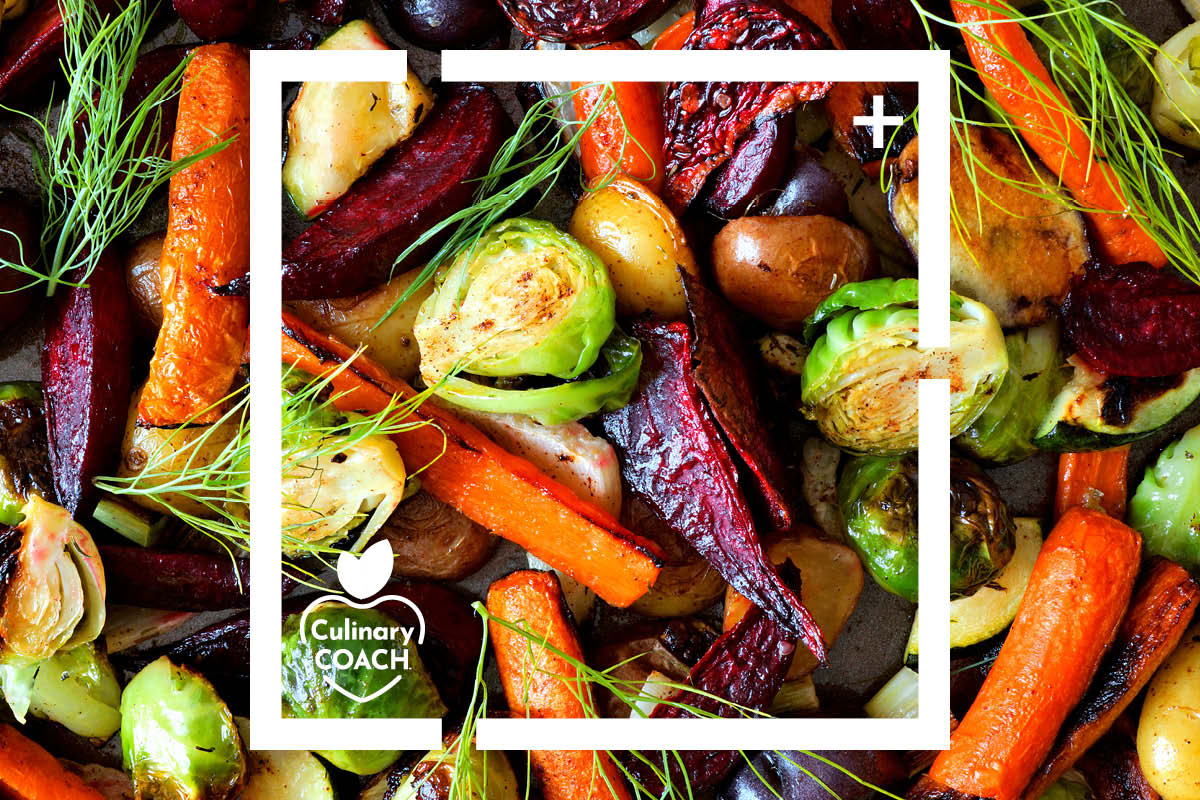
22 Nov Top Ten Winter Food Ideas from Culinary Coach
The winter season is perhaps the most exciting time of the year from a culinary standpoint. Seasonal treasures provide a cornucopia of opportunities to honor the Earth’s bounty and support our microbiomes.
At Culinary Coach, we love this season. It provides a huge variety of affordable ingredients with a wide range of health benefits and an endless supply of flavor possibilities. It’s also an easy season to use meat proteins as punctuation and not the center of the meal.
Utilizing winter season ingredients is a fantastic way to positively impact your community’s bottom line. With the wholesale cost of food rapidly rising due to COVID-related supply chain shortages, buying fresh food in season not only saves money due to increased product levels but also helps to reduce costly vendor outages that often turn into unplanned substitutions or expensive trips to the store.
Simply put, when a product is more readily available, it tends to cost less, be of better quality, and reduce the strain on operations and workforce. Additionally, it most often costs less than canned, frozen or pre-prepared foods. Once you’ve made fresh cranberry sauce or green bean casserole and realize how inexpensive (and easy) it is, it’s hard to go back to canned. And your residents will appreciate it, especially those who watch food TV and have more modern palates.
Is your community planning for the holidays now? While honoring traditional culinary offerings, you can always introduce seasonal menu items (both center-of-plate and sides) as specials or as additional options. And you can run them all season, as opposed to just around a few specific dates. This is a great way to test out new recipes and get feedback on the evolution of resident flavor profiles.
This is also a perfect time to ease into the trend of offering more vegetarian and vegan options.
Our Winter Top Ten:
- Squash & Pumpkins: Hearty winter squashes make amazing soups, side dishes and main entrees. Pumpkin can be transformed into a decadent soup or bisque with relatively few ingredients and is very cost-effective. Same with Butternut and Acorn squash, which can also be stuffed and roasted in either sweet or savory styles. Spaghetti squash can make a fun pasta alternative that adds dimension and texture.
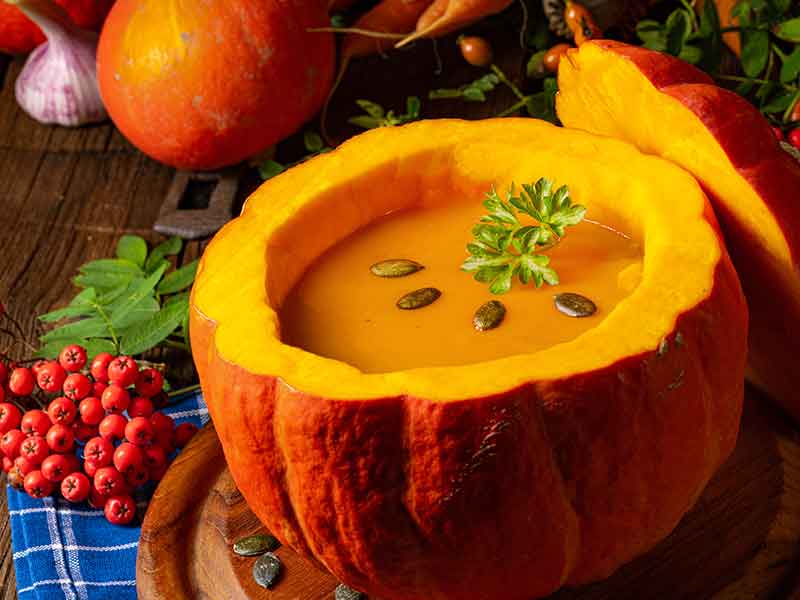
- Cruciferous Vegetables: Cruciferous vegetables such as collards, cabbages, brussels sprouts, radishes, broccoli, broccoli rabe, kohlrabi, cauliflower and Romanesco are not only delicious and adaptable to multiple cooking methods, but they are also high in essential vitamins and minerals that are proven to reduce inflammation and reduce the risk of cancer. So easy to roast with herbs (or bacon!) and cauliflower makes a delicious gratin with a crunchy, cheesy crust.
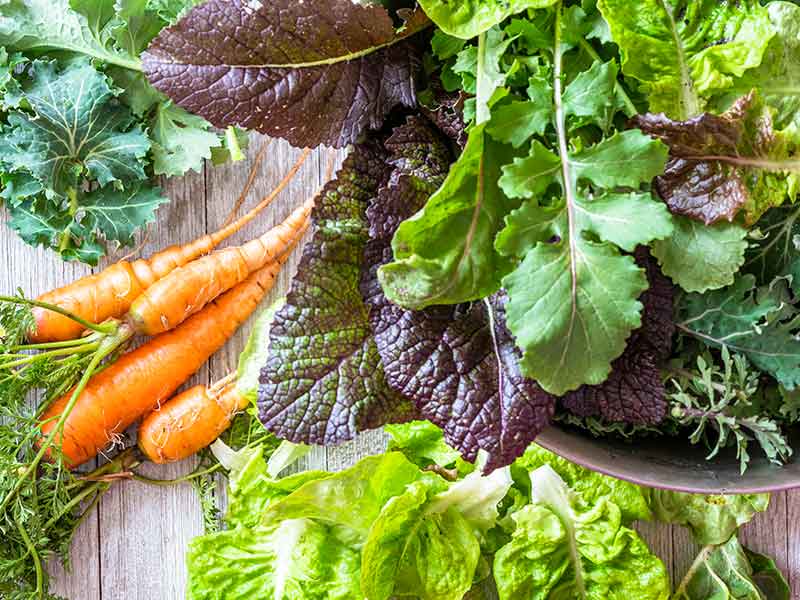
- Leafy Greens: Take your salads to the next level by adding some leafy winter textures and flavor profiles. Mustard, escarole, mizuna kale, Swiss chard, arugula, spinach, and romaine are all delicious and packed with antioxidants and calcium, and can be served both cold and hot. Have you ever had a grilled romaine heart or braised escarole? Life-changing!
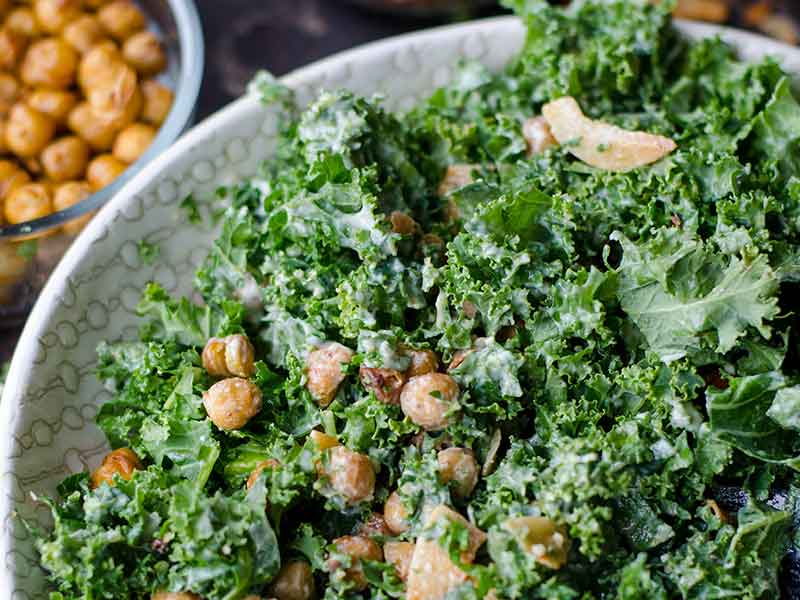
- Root Vegetables: Beets, carrots, turnips, rutabagas, parsnips, onions, potatoes, sweet potatoes and celery root make amazing additions to hearty stews, either with meat or without. A variety of roasted root vegetables on a plate is sure to warm the hearts of comfort-food lovers everywhere. They can also be pureed to make delicious sauces. Additionally, these vegetables are high in fiber and antioxidants that can further boost the immune system and aid in digestion and gut health. What’s not to love about a roasted beet salad with goat cheese?
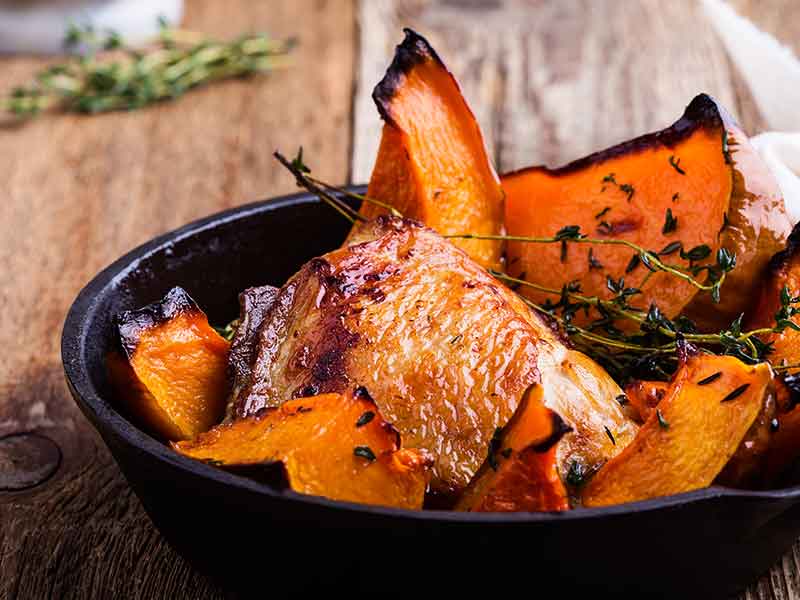
- Winter Fruits: In addition to cranberries, several varieties of citrus fruits such as blood oranges, clementines, Meyer lemons, limes, kumquats, thrive this time of year. These can be turned into sauces, glazes or ingredients for salads. Pears and apples are also robust in the fall and winter and can be made into desserts or salads. Perhaps one of the world’s most historically significant fruits, the pomegranate, is a true winter staple and is often used as a garnish, turned into a dressing, or simply eaten on its own as a dessert or palate cleanser. The health benefits of winter fruits are many, and like their vegetable counterparts, add so much affordable spark to your menus.
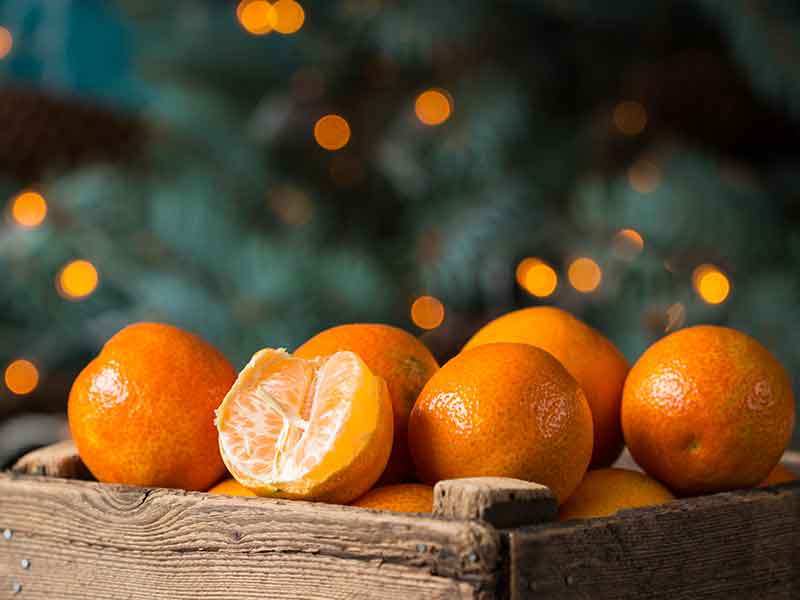
- Thanksgiving Twist: Herb-crusted turkey, mashed sweet potatoes with Swiss chard, caramelized brussels sprouts, fresh cranberry compote. Soup: Creamy Butternut Squash Salad: Grilled romaine with toasted walnuts, blood oranges, feta, and lemon-thyme dressing. Upscale? Yes! More expensive? No!
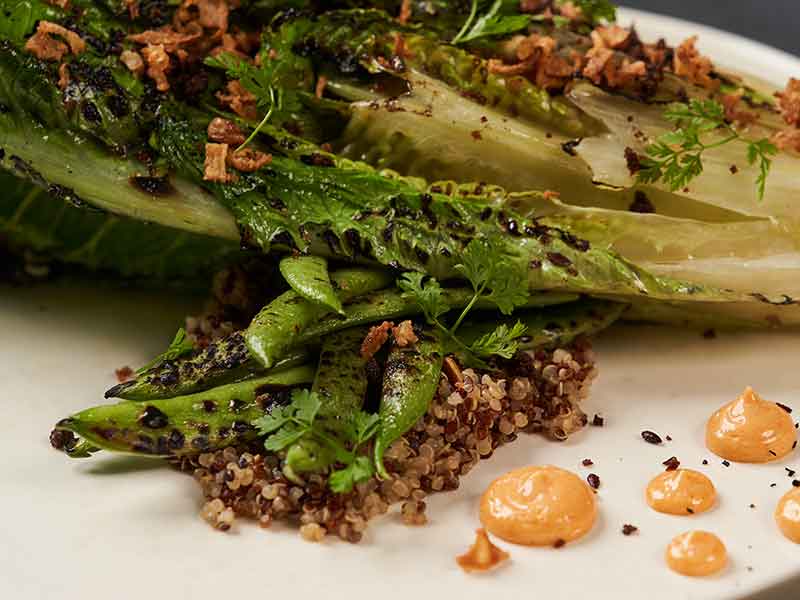
- Christmas Dinner: Ribeye roast (or top round, tri-tip, sirloin), fresh-grated horseradish, whipped cauliflower and parsnip gratin, balsamic roasted root vegetables, fresh apple tart. Soup: Spiced Pumpkin Bisque. Salad: Kale, chard, and mustard greens with pears, chevre, pumpkin seeds, and pomegranate dressing. The side dishes are the party.

- Hannukah: Rosemary orange brisket, crisp potato latkes, braised cabbage with Jerusalem artichokes, cran-raspberry mazurka. Soup: Matzo Ball and root vegetable. Salad: Fennel, radicchio, and radish with orange dressing.
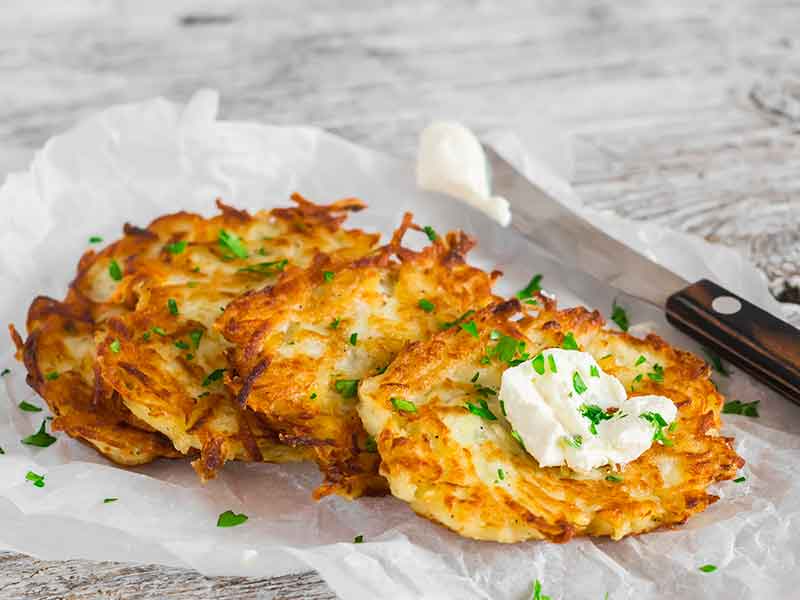
- Vegetarian: Apple and pecan-stuffed acorn squash, braised lentils with kale and winter mushroom, celery root puree, cider-poached pear. Soup: Roasted Carrot Ginger. Salad: citrus-glazed beets, spinach, and arugula with almonds and honey-lime vinaigrette. It’s a celebration of Gaia!
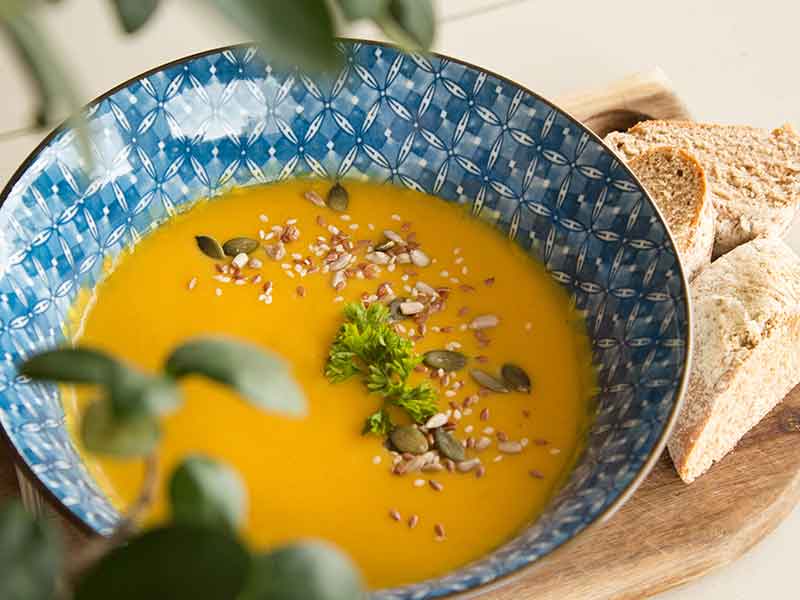
- Cocktails: Seasonal specials don’t have to be just for food. A blood orange and rosemary old-fashioned warms the stomach, while a pomegranate martini provides a colorful and festive appearance. And a cranberry-ginger mule in a copper mug adds that perfect blend of sweet and spicy for a festive and beautiful drink.

In the senior living industry, the health of residents is a priority. Utilizing fresh ingredients in season is an easy, cost-effective way to boost immunity, fight disease, and provide necessary dietary supplementation. During the holidays, when food is more indulgent than other times of the year, introducing a wider variety of fresh ingredients provides a counterbalance to the heaviness and helps to ensure that nutritional needs are being met without added chemicals or artificial ingredients. At Culinary Coach, we believe food is medicine. Not just for the body, but for the soul as well. What you feed your residents (and yourselves) matters. There’s no reason your food can’t be delicious, healthy and cost-effective.
If you’ve got questions, feel free to reach out to us at culinarycoach.us and we’ll be glad to give you some ideas or provide a consultation.
Click this link to see seasonal vegetables available by state.
Click here for some quick and easy recipes!
